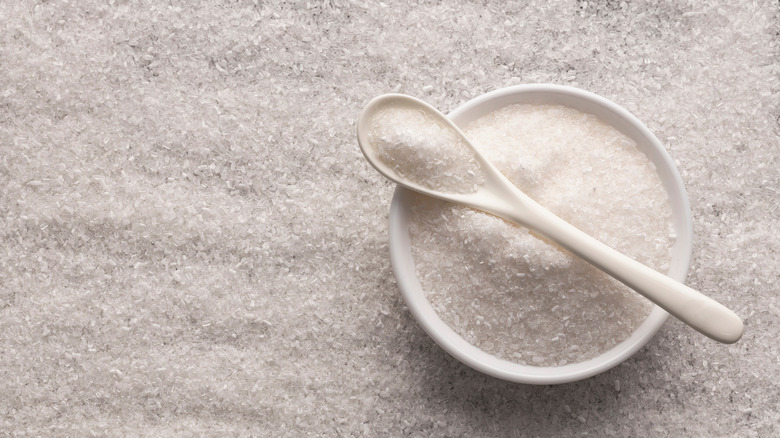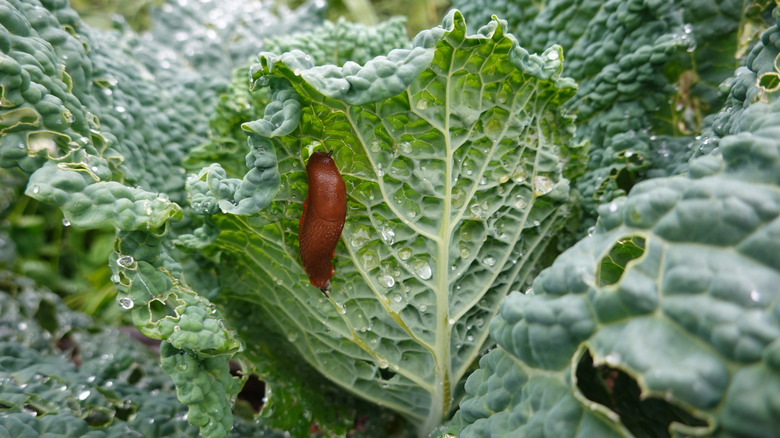How Sea Salt Fights Off Pests In Your Garden
Gardeners know the frustration of finding slugs chewing through tender leaves or caterpillars nibbling away at prized herbs. It's discouraging, and no one does all that hard work expecting to see it come to nothing in the end. Chemical pesticides can feel like overkill, and while natural fixes such as vinegar can repel insects, they don't always live up to their promise. Sea salt, which has multiple health and wellness benefits on its own, stands out as a surprisingly effective solution when used correctly. Food Republic spoke exclusively with Nicole Carpenter, pest control professional and President of Black Pest Prevention, about why it's worth trying. "It's not the sodium chloride that makes sea salt [work] but the texture," she tells us. She describes the grains as "tiny scratchy shards of glass" with one key difference: They absorb moisture.
This unique texture is what makes sea salt (which is different from kosher salt) deadly to certain pests, allowing you to solve your problem without an expensive or environmentally harmful pesticide. As Carpenter explains, "Sea salt won't do anything to hard-shelled pests like beetles, cockroaches, or ants, but works on soft-bodied slugs, snails, caterpillars, sowbugs, and some larvae." When these creatures attempt to crawl across a salted area, the abrasive crystals scrape their bodies and quickly draw out vital moisture. "Sea salt is basically a desiccant — it pulls water out of their tissues, eventually killing them," Carpenter says. The result isn't instant, but it's effective at discouraging repeat visitors. For gardeners tired of seeing their plants under attack, understanding which pests are vulnerable is the first step toward using salt strategically. It isn't a cure-all, but when matched with the right invaders, it can make a noticeable difference in protecting your garden.
How to apply sea salt safely in the garden
You have to apply sea salt in a way that targets pests without damaging the plants you're trying to protect. Nicole Carpenter tells us, "Good placing and regular reapplying — that's actually all it takes." Because salt isn't attractive to pests, the main thing to focus on is anticipating where they're likely to travel. For slugs and snails, that means sprinkling a thin, even line around the bases of plants or along the borders of raised beds. "If your problem is sowbugs or caterpillars sneaking in through foundation cracks, then dust a thin line of salt near those entry points," she advises. Patios and walkways can also be protected by scattering a light layer along the edges where pests tend to crawl.
But moderation is crucial. Carpenter warns, "Salt pulls out moisture not only from bugs but also soil and plants, and since water is essential for all living beings, salt is potentially deadly for all of them." For that reason, she recommends keeping it away from the soil where vegetables, herbs, or flowers root. Instead, limit use to spaces where plants aren't growing, like garden bed borders, patio edges, or cracks near foundations. Also, make sure to water your plants appropriately if you do place salt anywhere near growing vegetables. Keep in mind that heavy rains may require reapplication so that the salt doesn't get hydrated and washed away, limiting its effectiveness. When you use it sparingly and strategically, it can serve as a simple line of defense without harming your garden's health.


